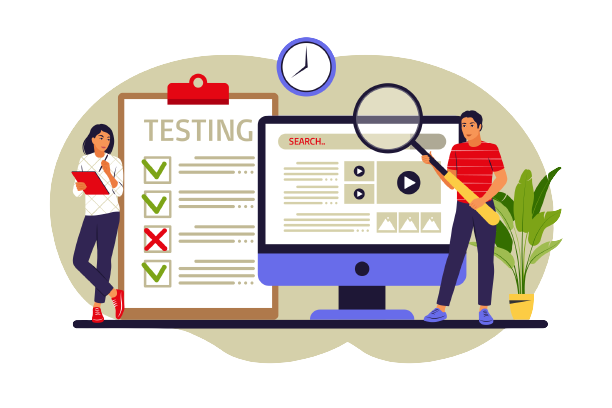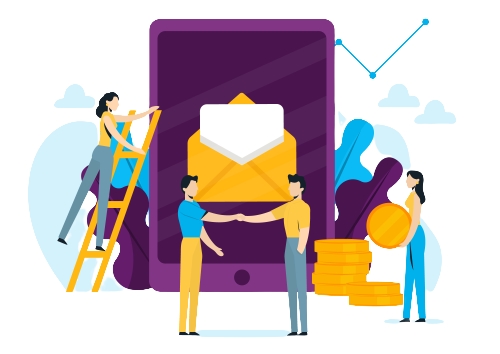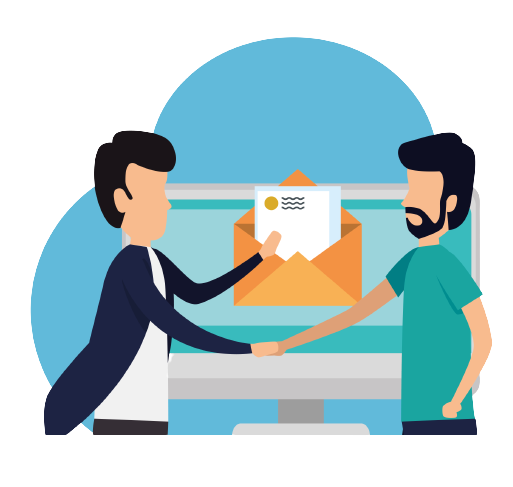
Email is the lifeblood of marketing – the conduit through which we connect with our valued customers and leads. It’s also the gateway to transforming cold leads into warm opportunities, making it a critical component of any successful marketing strategy. But the burning question remains: How can we be certain that our emails are truly effective? The answer lies in the A/B testing feature of the best marketing automation software 2023.
A/B testing, in the world of marketing, is akin to a scientific experiment, where we pit two variations of our marketing materials against each other to discern which one performs better. Whether it’s landing pages, advertisements, emails, or any other marketing collateral, A/B testing allows us to measure and compare their impact. All you need is the right marketing automation software with an email marketing feature that can allow you to create email campaigns and perform Email A/B Testing.
To extract the golden nuggets of insight, users are presented with random variations (A or B), and then we meticulously measure conversion rates for desired outcomes. It could be anything from open rates and click-through rates to form fills and SEO success – whatever success metric we’re aiming for.
Email A/B Testing is an innovative technique that empowers you to compare different versions of your emails, understand what resonates with your audience, and make data-backed decisions that yield remarkable results. In this comprehensive guide, we’ll uncover strategies, tips, and best practices that will elevate your marketing prowess to new heights using. Whether you’re a seasoned marketer looking to fine-tune your approach or a business owner eager to boost sales using marketing automation, this blog will equip you with the knowledge and tools to make a profound impact on your marketing and sales endeavors.
What is Email A/B Testing and How Does It Work?
 Email A/B Testing is a savvy and strategic technique that empowers marketers to fine-tune their email campaigns for maximum impact. And when combined with the best marketing automation software 2023, this dynamic duo has the potential to revolutionize your marketing efforts.
Email A/B Testing is a savvy and strategic technique that empowers marketers to fine-tune their email campaigns for maximum impact. And when combined with the best marketing automation software 2023, this dynamic duo has the potential to revolutionize your marketing efforts.
So, what exactly is Email A/B Testing, and how does it weave its magic? At its core, it’s a well-thought-out experiment, pitting two or more variations of an email against each other to determine which version performs better. It’s like a friendly faceoff between Version A, the control group, and Version B, the variant that incorporates a specific change you want to test.
Consider – You have an idea that personalizing your subject lines will boost open rates. With Email A/B Testing, you create two versions of your email – one with a personalized subject line (Version B) and the other with a generic subject line (Version A). To ensure an unbiased test, your email list is split randomly, with half receiving Version A and the other half receiving Version B. No unfair advantages here!
Once the emails are sent and the anticipation builds, it’s time to dive into the data. You measure the performance of each variant based on predefined metrics like open rates, click-through rates, and conversion rates. The one that shines, the one that garners the highest open rates or achieves your desired KPIs, claims victory as the winner – giving you a wealth of insights to inform your future email marketing strategies.
But hold on, this is no one-time wonder! The beauty of Email A/B Testing lies in its iterative nature. Fortified with newfound knowledge, you can refine your approach, come up with new hypotheses, and keep experimenting to continually enhance your results.
Now, imagine coupling the power of Email A/B Testing with the best marketing automation software 2023. The possibilities are endless! With this dynamic duo by your side, you can effortlessly run automated A/B tests, seamlessly track performance metrics, and gain a holistic view of your marketing efforts. The software’s advanced features and intuitive interface will allow you to create captivating emails, nurture leads, and drive conversions like never before.
So, if you’re ready to wield this potent combination, the magic of Email A/B Testing and the best marketing automation software 2023 await your command. It’s time to unlock the true potential of Email A/B Testing and embrace the future of sales and marketing.
What Are the Strategies for Effective Email A/B Testing?

To ensure success with Email A/B Testing, it’s essential to implement effective strategies that yield actionable insights. Here, we’ll delve into the key strategies that will help you conduct meaningful and impactful A/B tests for your email marketing efforts while using the best marketing automation software 2023 :
- Define Clear Objectives: Before diving into A/B testing, establish clear objectives for your email campaign. Determine the specific metrics you want to improve, such as open rates, click-through rates, conversion rates, or even revenue generated. Having well-defined goals will guide your testing process and ensure you focus on what matters most to your business.
- Test One Element at a Time: To avoid confusion and obtain accurate results, it’s crucial to test only one variable at a time. Variables can include subject lines, email content, calls-to-action, sender names, or even the timing of your emails. By testing one element per experiment, you’ll be able to pinpoint the exact factor contributing to any performance differences.
- Segment Your Audience: Not all subscribers have the same preferences and behaviors. Segmenting your email list based on relevant criteria, such as demographics, interests, or past interactions, allows you to conduct more targeted A/B tests. This ensures that you’re delivering the most relevant content to specific audience segments, thus increasing the likelihood of positive outcomes.
- Size Your Sample Appropriately: When dividing your email list into A and B groups, ensure that each sample size is statistically significant. A small sample size may not yield reliable results, while an excessively large one could waste resources. Aim for a balance that gives you enough data to draw meaningful conclusions without overwhelming your resources.
- Conduct Tests Simultaneously: To minimize external factors’ influence, it’s crucial to run A/B tests simultaneously. Sending different versions on different days or times may lead to confounding variables, making it challenging to attribute any changes in performance to the tested variable accurately.
- Monitor the Right Metrics: Determine which metrics align with your campaign objectives and monitor them closely. Keep track of how each variant performs against the defined KPIs. For instance, if you aim to increase conversions, track click-through rates and conversion rates to see which version drives the most actions.
- Let the Data Speak: Avoid making assumptions or relying on personal biases when interpreting the results. Base your conclusions solely on the data collected during the A/B test. Analyze the data objectively to draw valid insights that inform your future marketing decisions.
- Iterate and Learn: A/B Testing is a continuous learning process. Use the insights gained from one test to inform your next set of experiments. As you iterate and refine your strategies, you’ll unlock opportunities to optimize your email campaigns continually.
- Test Again & Over Again: Don’t limit yourself to just one A/B test. Conduct multiple tests across various elements and audience segments to maximize the effectiveness of your email marketing efforts continually. The more tests you run, the more data you’ll gather, allowing you to make informed and strategic improvements over time.
Stay curious, stay innovative, and never stop testing – these are the keys to unlocking the full potential of Email A/B Testing and driving success in your email campaigns in the best marketing automation software 2023.
How Can You Leverage Email A/B Testing for Marketing Success?
 Finding the key that unlocks marketing success remains a mysterious quest. Amidst the constant noise and competition, marketers seek that one extraordinary tool capable of elevating their campaigns to new heights. The answer lies within the realm of Email A/B Testing as it holds the potential to revolutionize your marketing strategies. But how can you harness this power? How can you leverage Email A/B Testing to unveil the true potential of your email campaigns and resonate deeply with your audience?
Finding the key that unlocks marketing success remains a mysterious quest. Amidst the constant noise and competition, marketers seek that one extraordinary tool capable of elevating their campaigns to new heights. The answer lies within the realm of Email A/B Testing as it holds the potential to revolutionize your marketing strategies. But how can you harness this power? How can you leverage Email A/B Testing to unveil the true potential of your email campaigns and resonate deeply with your audience?
Below are some best practices that will empower you to conduct meaningful A/B tests with confidence and precision.
1. Personalization and Targeting
One of the primary advantages of Email A/B Testing is its ability to test different levels of personalization and targeting. Tailoring emails to specific segments of your audience can significantly impact engagement and conversions. With A/B Testing, you can experiment with personalized subject lines, content, and calls-to-action (CTAs) for different audience segments. By analyzing the results, you’ll discover which level of personalization resonates best with each group, allowing you to craft hyper-relevant emails that generate higher open rates and click-through rates.
2. Optimizing Subject Lines and Preheaders
The subject line is the gateway to your email content. Crafting an attention-grabbing subject line is crucial to enticing recipients to open your email. Through A/B Testing, you can experiment with different subject lines and preheaders to see which combinations drive better open rates. Test variations that emphasize urgency, curiosity, or personalization to determine the most compelling messaging for your audience.
3. Content and Design
The content and design of your emails play a pivotal role in captivating your readers and inspiring action. A/B Testing allows you to compare different email formats, layouts, visuals, and content variations. Test contrasting designs, length of content, and placement of CTAs to identify which elements drive higher engagement and conversions. Based on the results, you can optimize your email templates to align with your audience’s preferences.
4. Call-to-Action Testing
The effectiveness of your email’s call-to-action can make or break its success. A/B Testing enables you to experiment with different CTAs, such as text, buttons, or hyperlinked images, to gauge which type generates the most clicks. Additionally, you can test variations in CTA placement, color, and wording to understand which approach resonates most effectively with your subscribers.
5. Timing and Frequency
The timing of your email sends can significantly impact open and click-through rates. With A/B Testing, you can evaluate the performance of emails sent at different times of the day or days of the week. Additionally, you can test the frequency of your emails to determine the ideal balance between staying on your audience’s radar without overwhelming them.
6. Segment-Specific Offers
Email A/B Testing allows you to craft and test unique offers for different segments of your audience. By tailoring incentives based on subscriber behavior, preferences, or demographics, you can foster a stronger connection with your subscribers and drive conversions. Test different offers, discounts, or exclusive content for specific segments to see which approach yields the best results.
7. Email Length and Formatting:
The length and formatting of your emails can impact readability and engagement. A/B Testing gives you the opportunity to test short and concise emails against longer, more detailed ones. Additionally, experiment with formatting elements such as bullet points, paragraphs, or bolded text to determine the most appealing layout for your subscribers.
The data-driven insights gained from A/B Testing will empower you to refine your marketing strategies continually and achieve unparalleled success in your email marketing endeavors using the best marketing automation software 2023.
How Can Email A/B Testing Be Utilized for Sales Optimization?
 To maximize the effectiveness of your email campaigns and boost sales, Email A/B Testing emerges as a crucial ally. By conducting systematic experiments and refining your sales-focused email strategies, you can optimize every aspect of your outreach and ensure that your messages resonate with your audience in a compelling and persuasive manner.
To maximize the effectiveness of your email campaigns and boost sales, Email A/B Testing emerges as a crucial ally. By conducting systematic experiments and refining your sales-focused email strategies, you can optimize every aspect of your outreach and ensure that your messages resonate with your audience in a compelling and persuasive manner.
1. Crafting Persuasive Email Subject Lines
The subject line is the gateway to your email, and it plays a significant role in determining whether it gets opened or ignored. Through A/B testing, you can explore various subject line approaches, such as personalization, urgency, curiosity, or value proposition. Analyzing the performance of different subject lines will reveal which ones generate higher open rates and capture your recipients’ attention, thus setting the stage for impactful sales messages.
2. Tailoring Email Content and Offers
Once your email is opened, the content becomes the driving force behind its success. With A/B testing, you can experiment with different email content variations – from the tone and messaging to the length and formatting. Additionally, testing various offers, discounts, or incentives can help you identify the most enticing offers that trigger actions and conversions.
3. Optimizing Call-to-Action (CTA) Buttons
A strong and strategically placed CTA is essential for guiding recipients toward taking the desired action. Through A/B testing, you can test different CTA texts, colors, sizes, and placements. This process will help you discover the most effective combinations that entice prospects to click and progress further along the sales funnel.
4. Nurturing Sequences and Follow-ups
Email sequences are a powerful tool for nurturing leads and building relationships. A/B testing allows you to experiment with different email sequences and follow-up strategies. By analyzing which sequences generate higher engagement and conversion rates, you can fine-tune your nurturing approach to keep prospects engaged and increase the likelihood of closing sales.
5. Optimizing Email Timing
The timing of your sales emails can significantly impact their effectiveness. Experimenting with different send times and days of the week can reveal when your audience is most receptive to your messages. By identifying the optimal timing, you can ensure that your sales emails arrive when prospects are most likely to engage and respond positively.
6. Personalization and Segmentation
Personalization is a potent tool in sales. By leveraging A/B testing, you can explore different levels of personalization and segment your audience based on demographics, preferences, or past interactions. This allows you to send tailored messages that resonate more deeply with individual recipients, increasing the chances of conversions.
7. Analyzing Conversion Funnel Performance
Beyond individual email elements, A/B testing can be applied to the entire sales conversion funnel. By analyzing how different email sequences impact conversion rates at various stages of the funnel, you can optimize your entire sales process, identify potential bottlenecks, and create a seamless path to conversion for your leads.
8. Retargeting and Cart Abandonment Recovery
For e-commerce businesses, A/B testing is invaluable for retargeting and cart abandonment recovery emails. Testing different retargeting strategies and incentives can help recapture lost sales opportunities and recover potential customers who showed interest but didn’t complete the purchase.
Using Email A/B Testing for sales optimization can significantly impact your bottom line. A data-driven approach to sales-focused email campaigns will enable you to connect with your prospects, build trust, and drive conversions, ultimately leading to heightened sales success and business growth.
Analyzing and Interpreting A/B Test Results: Extracting Valuable Insights for Success
 After conducting your Email A/B tests using the best marketing automation software 2023 and gathering data from your experiments, the next crucial step is to analyze and interpret the results. This phase is where the magic happens, as you’ll uncover valuable insights that will inform your future marketing decisions and help you optimize your email campaigns for even greater success. Let’s explore the steps involved in analyzing and interpreting A/B test results:
After conducting your Email A/B tests using the best marketing automation software 2023 and gathering data from your experiments, the next crucial step is to analyze and interpret the results. This phase is where the magic happens, as you’ll uncover valuable insights that will inform your future marketing decisions and help you optimize your email campaigns for even greater success. Let’s explore the steps involved in analyzing and interpreting A/B test results:
- Gather Comprehensive Data: Before diving into analysis, ensure you have gathered comprehensive and accurate data from your A/B test. This includes data on key performance indicators (KPIs) such as open rates, click-through rates, conversion rates, and any other metrics relevant to your campaign objectives.
- Establish Statistical Significance: One of the essential aspects of analyzing A/B test results is determining statistical significance. This involves checking whether the differences observed in performance metrics between the test groups (A and B) are statistically significant or simply due to chance. Tools and calculators are available to help you determine significance levels, ensuring you can confidently rely on the results.
- Look Beyond the Numbers: While numbers provide valuable insights, don’t forget to consider the context and qualitative aspects of your A/B test. Take into account the unique characteristics of each variant and try to understand why one outperformed the other. Sometimes, the reasons behind the results can offer deeper insights into your audience’s preferences and behaviors.
- Consider Audience Segmentation: If you’ve conducted A/B tests on segmented audience groups, compare the results within each segment. Analyzing the differences in performance between different audience segments can reveal opportunities to personalize and tailor your email campaigns further.
- Focus on the Big Wins: Identify the variants that had the most significant impact on the desired metrics. These are your “big wins” – changes that led to substantial improvements in performance. Prioritize these successful variants and consider implementing them across your future campaigns.
- Identify Areas for Improvement: On the flip side, analyze the variants that didn’t perform as well as expected. These are equally valuable, as they highlight areas where you can make improvements. Assess the reasons behind the lackluster results and use this knowledge to avoid similar pitfalls in future tests.
- Learn from Patterns and Trends: Analyze the data across multiple A/B tests to identify patterns and trends. Certain elements, such as subject lines, call-to-action buttons, or visuals, may consistently impact email performance. Recognizing these trends allows you to create guidelines and best practices for your future email marketing efforts.
- Test Incremental Changes: After analyzing results, you may be tempted to make sweeping changes to your email campaigns. While big changes can be effective, also consider testing incremental changes to refine your approach. Small adjustments can add up to significant improvements over time.
- Document and Share Insights: As you analyze and interpret A/B test results, document your findings and share them with your team. Collaborating and discussing the insights can lead to further understanding and spark new ideas for future tests.
With these insights, you can continually refine and optimize your email campaigns, driving higher engagement, increased conversions, and long-term success in your email marketing endeavors.
Implementing Email A/B Testing in Your Business
 As we come to the conclusion of our exploration into the world of Email A/B Testing, it’s clear that this dynamic technique is an extraordinary feature of the best marketing automation software 2023 for any business looking to elevate their email marketing endeavors.
As we come to the conclusion of our exploration into the world of Email A/B Testing, it’s clear that this dynamic technique is an extraordinary feature of the best marketing automation software 2023 for any business looking to elevate their email marketing endeavors.
To successfully implement Email A/B Testing in your business, make sure to:
- Define Clear Objectives
- Test One Element at a Time
- Segment Your Audience
- Monitor the Right Metrics
- Analyze and Interpret Results
- Test Incremental Changes
- Iterate and Learn
- Document and Share Insights
By adopting these best practices and embracing the power of data-driven email marketing, you’re paving the way for remarkable growth and success. Email A/B Testing empowers you to make informed choices, create compelling content, and connect with your audience on a deeper level. Take the first step towards data-driven email marketing success using the best marketing automation software 2023 – start A/B testing today and witness the incredible transformation that awaits your business. Happy testing!